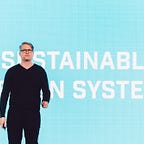4 Ways to Improve Your Product Development: A Timeless Framework for Producing Products
I recently reflected on my past decade in designing and building digital products. Often I get asked how products should be made and my answer remains same, it depends. There is no silver bullet that would produce consistent results and be able to scale. Complex business models and varying industries make it close to impossible. My thoughts accumulated into a flow which then started adding parallel layers. After some peer discussion and comments the AMAA Product Development Matrix was born.
It’s my attempt at summarizing all the themes, subjects and artifacts that make the flow of producing products as light as possible and describe the parallel levels that should be considered. The aim is to have a context for discussion, so instead of building a process it opts for offering a shared context and a vocabulary. Something to build upon in any organization, industry or context.
The vertical axis represents a step that cuts through each level. Progress is moving from left to right starting with considering each theme Alignment, Mission, Awareness and Artifact. Ending in hopefully achieving the impact that was ideally the intended change in the world. The horizontal axis groups a theme together to form a flow of a level. Progress is achieved by team discussions that iteratively forms towards more detailed definitions and the concrete.
1. Aligning to a Northern Star
You would be surprised to know how many companies start out without an ideal state of the future. They can become profitable but misuse resources and wander along the way. Defining a vision is key for any organization in order to build a solid strategy and drive operations towards impact in the world. Strategic goals which can be defined as OKRs. Learn more about OKRs here and here. To make OKRs more actionable and more measurable enter KPIs.
Just remember to make measurement about the outcomes and not the process needed to achieve it, read some examples of KPIs here. OKRs and KPIs are not to rule out other ways of documenting high-level objectives of an organization and slicing them to make them actionable and operational. Metrics are then needed to prove that we are actually reaching our KPIs and more importantly if we are not. What we then hopefully see is the outcomes that have an impact on the world around us.
2. Setting Forth on a Mission
A company is not whole if it has a solid vision and great staff. When looking at larger corporations in order to scale the doing, the capability to carry out operations is key. The operations an organizations carries out are a result of the business model. When tracing for root causes far enough it is so ever often true that it was a result of the business model and how the organization was structured around it. The bad news is that business models are slow to change and require politics to transform. The good news is this is not the end!
Business models can evolve and should. This just requires some research into the domain. What is the market and who are our customers? By asking plenty of questions and following the curious path we can find solutions. The first solution idea might not be the best so we need to keep experimenting. Who knows, we might come up with something innovative. Let’s at least give it a chance. Over some time experimenting with different solutions we can discover totally new opportunities that can potentially create new business.
3. Raising Awareness
Having a better awareness of the world surrounding us we can make better decisions. One thing will always be true. There will always be uncertainty. Don’t be afraid to start with assumptions. By putting your assumptions to the test you can find ways to discover actual issues that you need to solve. Solving issues might feel challenging but if we create hypothesis to test we can at least learn more. Testing our hypothesis will lead to insights that can direct us towards better serving our customers and their goals and needs. Only by gathering data we can discover patterns and trends which can lead to pivots but those are the turns that keep us on track in the long run.
4. Concrete Artifacts
We can have the greatest minds but the real world also needs concrete things in it. The point of artifacts in most cases is not the artifact itself but what it conveys. A vision statement communicates the direction the company is reaching for and its values. A concept brief sets programs or projects on the same track so everyone can feel that they are headed for the same direction. Consider that as a starting point for collaboration. Solutions require iteration after iteration in order to become fantastic. Keeping them light and focused is work done wisely. Prototypes bring the solution proposals concretely into our customers hands. Once we have reduced enough uncertainty we are ready to deliver our product to the customers.
Final conclusions..
Although no single framework, ideology or methodology can solve every problem I hope this will help you communicate the subjects that should be covered in order to produce great products and improve your organization while doing it. The sole inspiration for the AMAA Product Development Matrix was my own struggles of communicating the parallel levels. Discussions limited to one level have too many times been a source of obstacles and miscommunication. So bringing these into the same context needs to happen just like our interdisciplinary product teams. Don’t be restricted but instead enable, support and improve! Please comment and get in touch with me if you have any questions.
